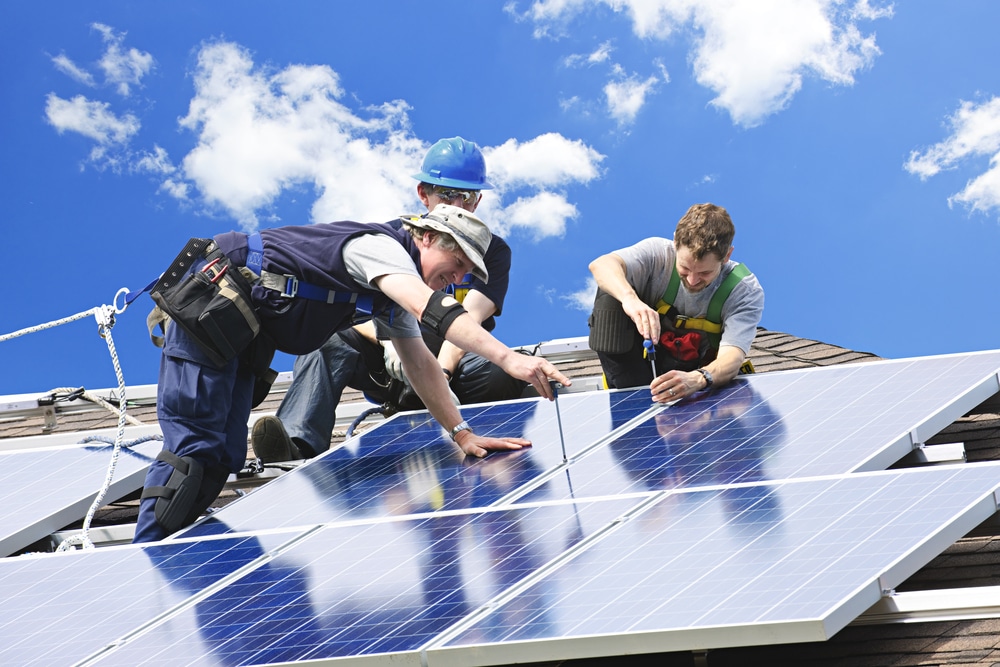Roofs are one of the most important components of building construction. As such, it is important to understand how to properly construct a roof for any given region and climate. In this article, we will examine what constitutes a standard size roof pitch angle in Arizona. We will analyze regional requirements and discuss factors that could affect the optimal degree for the area’s climate. Additionally, we will explore cost-effective alternatives which may be used when constructing roofs in Arizona. By exploring these topics, readers should gain an understanding of what constitutes a suitable roof pitch angle in Arizona.
Arizona’s weather conditions can vary greatly throughout the year; temperatures range from hot summers with high humidity levels to cold winters with dry air. This diversity creates unique challenges when designing and constructing buildings within the state. When selecting materials and determining optimum angles for sloping roofs, designers must consider dynamics specific to Arizona’s environment during their calculations.
Definition Of Roof Pitch
A roof pitch is a measurement of the angle at which a roof rises from its lowest to highest point. It can be expressed in terms of the ratio between the rise and run, or as an angle with the horizontal plane. Roof pitches are usually described in degrees starting at 0° for flat roofs; often times, they will range anywhere from 4°-20°. A standard size roof pitch angle in Arizona typically falls within this range.
The shape and slope of a roof impacts many aspects related to construction including drainage, air flow, ventilation, and even aesthetic appeal. To ensure that all these factors have been taken into account, it is important to have accurate measurements when constructing a new home or making repairs on an existing one.

Factors Affecting Standard Roof Pitch In Arizona
The standard size roof pitch angle in Arizona is determined by several factors. The climate of the area, the type of construction material used, and any building codes that are applicable to the region all influence what constitutes a typical pitch angle for residential roofs in Arizona.
The climate of Arizona typically consists of hot summers and mild winters. As such, it is important for homeowners to consider installing a roof with an appropriate degree of slope or pitch so as to maximize its efficiency in keeping their homes cool during summer months and warm during winter months. Additionally, depending on the materials used in constructing the roof, different angles may be more suitable than others; for instance, metal roofs need steeper slopes due to their propensity towards water penetration when laid flat. Finally, certain cities within Arizona have specific requirements pertaining to minimum degrees of slope based on local building codes; thus, these must also be taken into account when looking at standard pitches for residential roofs in the state.
Building Code Requirements For Standard Roof Pitch In Arizona
In Arizona, the standard roof pitch angle is determined by local building code requirements. Generally, roofs must have a minimum pitch of at least 3/12, or three inches of rise per foot of horizontal run. This means that for every one foot (or 12 inches) of distance across the bottom edge of the roof, the top edge should be raised at least three inches. For steeper pitches above 6/12, additional engineering may be required to ensure adequate structural integrity. In some cases, additional reinforcements such as trusses and posts may be necessary. Additionally, local municipalities typically require certain materials and treatments to enhance durability in extreme weather conditions such as high winds and heavy snowfall. To meet these standards, most builders use shingles that are specifically designed for harsh climates like those found in Arizona.
Benefits Of Low-Pitch Roofs In Arizona
In Arizona, it is becoming increasingly popular for homeowners to opt for low-pitch roofs. This type of roof offers numerous benefits due its simpler design. Low pitch roofs are easier and less costly to install than traditional sloped or pitched roofs as they require fewer materials and labor costs. As a result, the overall cost of construction can be significantly reduced compared to standard pitched roofs.
Low pitch roofs also provide greater protection against water damage since they have wider surfaces with more overlap between shingles. The overlap helps keep moisture away from the underlying structure while providing additional drainage support in areas prone to heavy rainfall or snowfall. Additionally, low pitch roofs tend to last longer since they don’t suffer from ice dams which form on steeply pitched roofs during winter months. They also offer improved energy efficiency by absorbing more sunlight and reflecting heat back outside instead of trapping it inside the building like traditional high-pitched roofs do.
Challenges Of High-Pitch Roofs In Arizona
In Arizona, the most common standard size roof pitch angle is 6:12. This means that for every 12 inches of horizontal distance on a roof surface, there is an incline/rise of 6 inches. Higher pitches are also not uncommon and can provide additional benefits in terms of drainage efficiency or even aesthetics. However, these higher-pitched roofs come with a number of challenges as well.
The primary challenge posed by high-pitch roofs in Arizona is their increased vulnerability to wind damage due to the greater amount of exposed area (compared to low-slope roofs). High winds could easily cause shingles to become dislodged or even blow off completely during inclement weather. Additionally, high-pitch roofs require more support beams than lower pitched ones, thus increasing costs associated with installation and maintenance. Lastly, steeper slopes create darker interiors which may be less desirable aesthetically when compared to flatter sloped roofs.
Overall, while high-pitch roof angles offer certain advantages over lower slope roof styles they must be weighed against potential drawbacks before being installed. Careful consideration should be given to ensure all factors have been taken into account prior to construction.
Calculating The Optimal Pitch For Your Home’S Roof
In Arizona, determining the optimal pitch angle of a roof depends on various factors. The most important factor to consider is climate and weather conditions. A steeper pitch may be more suitable for climates with high amounts of rain or snowfall due to the improved drainage it provides. In areas where large hail is common, a steep pitch can provide better protection from damage caused by falling debris. Additionally, local building codes should also be taken into consideration when deciding on a roof pitch as some areas have restrictions in place that require certain types of roofs at specific angles.
The angle of the roof is determined by calculating the rise (vertical measurement) over the run (horizontal measurement). This ratio usually expressed as x/12 where “x” represents the number of inches in vertical rise per foot of horizontal run. For example, if your home has an 8-foot tall wall and you want your roof to have a 6/12 pitch, you will need 12 feet horizontally before reaching 8 feet vertically. Therefore, the overall length of this section would be 18 feet long – 12 feet for the run plus 6 extra feet for the 6/12 pitch.
Professional Assistance For Determining Optimal Pitch Angle
In Arizona, there are different roof pitch angles that can be used depending on the desired look and functionality of the building. The most common roof pitch angle is 6/12, which is equivalent to a 30-degree slope from horizontal. Other common pitches in Arizona include 4/12 (18-degrees), 5/12 (25-degrees), 7/12 (35-degrees) and 8/12 (40-degrees).
When deciding on an appropriate roof pitch for your home or business, it is important to consult with experienced professionals who understand local regulations and weather conditions. Professional contractors have extensive knowledge about the types of roofs available and their differences in terms of durability, cost, aesthetics, energy efficiency, maintenance requirements, etc. Additionally, they can provide valuable advice about selecting materials based on geographic location as well as budget considerations.
Professional assistance also plays a crucial role when determining the optimal pitch angle for solar panels installation since this will influence how much sunlight exposure the rooftop receives throughout the day. Knowing these details upfront helps ensure that maximum efficiency is achieved while keeping costs at a minimum. Therefore consulting experts should always be part of any decision making process related to roofing projects.



